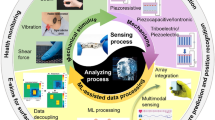Abstract
Structure and weight of neural networks play an important role in the predicting performance of neural networks. In order to overcome the main flaws of neural networks, such as under-fitting, over-fitting or wasting computational resource, correlation pruning algorithm combined with multiple linear regression (CPA-MLR) is proposed to optimize the structure and weight of neural networks. Firstly, an initial three-layer network with the maximum nodes of hidden layer is selected, and BP is employed to train it. Secondly, correlation analysis of the hidden-layer output is carried out to confirm the redundant hidden nodes. Thirdly, the redundant nodes will be deleted one by one, and a multiple linear regression model between the output of the hidden layer and the expected input of the output layer, which can be obtained through the inverse function of the output-layer node, is employed to obtain their optimal weight. Finally, the optimal structure of the neural networks, which is corresponding to the best predicting performance of the neural networks, is obtained. Further, a practical example, that is developing naphtha dry point soft sensor, is employed to illustrate the performance of CPA-MLR. The results show that the predicting performance of the soft sensor is improved and then decreased with deleting the redundant nodes, and the optimal predicting performance is obtained with the optimal hidden nodes.





Similar content being viewed by others
References
Xuefeng Y (2010) Hybrid artificial neural network based on BP-PLSR and its application in development of soft sensors. Chemom Intell Lab Syst 103:152–159
Wang L, Shao C, Wang H, Hong W (2006) Radial basis function neural networks-based modeling of the membrane separation process: hydrogen recovery from refinery gases. J Nat Gas Chem 15:230–234
Hagan MT, Demuth HB (1999) Neural networks for control. Am Cont Conf Proc 3:1642–1656
Jiménez A, Beltrán G, Aguilera MP, Uceda M (2008) A sensor-software based on artificial neural network for the optimization of olive oil elaboration process. Sens Actuators, B 129:985–990
Su HB, Fan LT, Schlup JR (1998) Monitoring the process of curing of epoxy/graphite fiber composites with a recurrent neural network as a soft sensor. Eng Appl Artif Intel 11:293–306
Lehtokangas M (1999) Modeling with constructive back propagation. Neural Netw 12:707–716
Nguye MH, Hussein AA, Robert IM (2005) Stopping criteria for ensemble of evolutionary artificial neural networks. Appl Soft Comput 6:100–107
Zur RM, Jiang Y, Metz CE (2004) Comparison of two methods of adding jitter to artificial neural network training. Int Congr Ser 1268:886–889
Le Cun Y, Denker JS, Solla SA (1990) Optimal brain damage. In: Touretzky DS (ed) Advances in neural information processing systems 2. Morgan Kaufmann, San Mateo, pp 598–605
Xiqun L, Yinglin Y (1997) A method of dynamic pruning the hidden layer nodes in a feedforward neural network. Chin J Control Theory J Control Theory (China) 14:101–104
Luchetta A (2008) Automatic generation of the optimum threshold for parameter weighted pruning in multiple heterogeneous output neural networks. Neurocomputing 71:3553–3560
Delashmit WH (2003) Multilayer perceptron structured initialization and separating mean processing. University of Texas, Dissertation
MacLeod C, Maxwell G, Muthuraman S (2009) Incremental growth in modular neural networks. Eng Appl Artif Intel 22:660–666
Qian L, Yongxian W, Youqin Z (2005) Hybrid pruning algorithm for artificial network training, Chin J Tsinghua Uni Sci Tech Tsinghua University (Science and Technology) (China) 45:831–834
Ballabio D, Vasighi M, Consonni V, Kompany-Zareh M (2011) Genetic algorithms for architecture optimisation of counter-propagation artificial neural networks. Chemometr Intell Lab 105:56–64
Shudong HE, Tan QU, Xiangqing H, Xinhan H (1998) Survey of architecture for multilayer feedforward neural networks. Contr Theor Appl Control Theory Appl 15:313–319
Jinhua X, Ho DWC (2006) A new training and pruning algorithm based on node dependence and jacobian rank deficiency. Neurocomputing 70:544–558
Zeng X, Yeung DS (2006) Hidden neuron pruning of multilayer perceptrons using a quantified sensitivity measure. Neurocomputing 69:825–837
Schittenkopf C, Deco G, Brauer W (1997) Two strategies to avoid overfitting in feedforward networks. Neural Netw 10:505–516
Funahashi K-L (1989) On the approximate realization of continuous mapping by neural networks. Neural Netw 2:183–192
Hornik K, Stinchcombe M, White H (1989) Multilayer feedforward networks are universal approximators. Neural Netw 2:359–366
Hornik K, Stinchcombe M, White H (1990) Universal approximation of an unknown mapping and its derivatives using multilayer feedforward networks. Neural Netw 3:551–560
Yan X (2005) Development of naphtha dry point soft sensor by adaptive partial least square regression. Chin J Chem Eng (China) 56:1511–1515
Zhou G, Si J (1999) Subset-based training and pruning of sgmoid neural network. Neural Netw 12:79–89
Acknowledgments
The authors gratefully acknowledge the supports from the following foundations: National Natural Science Foundation of China (20776042), Doctoral Fund of Ministry of Education of China (20090074110005), Program for New Century Excellent Talents in University (NCET-09-0346), “Shu Guang” project (09SG29) and the Fundamental Research Funds for the Central Universities.
Author information
Authors and Affiliations
Corresponding author
Rights and permissions
About this article
Cite this article
Wang, Y., Chen, C. & Yan, X. Structure and weight optimization of neural network based on CPA-MLR and its application in naphtha dry point soft sensor. Neural Comput & Applic 22 (Suppl 1), 75–82 (2013). https://doi.org/10.1007/s00521-012-1044-9
Received:
Accepted:
Published:
Issue Date:
DOI: https://doi.org/10.1007/s00521-012-1044-9




